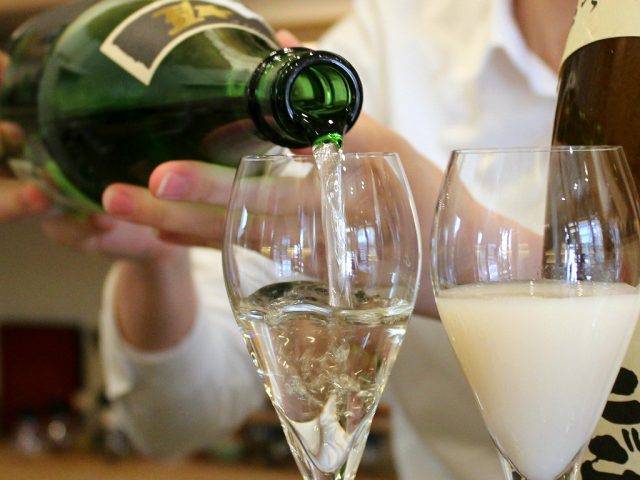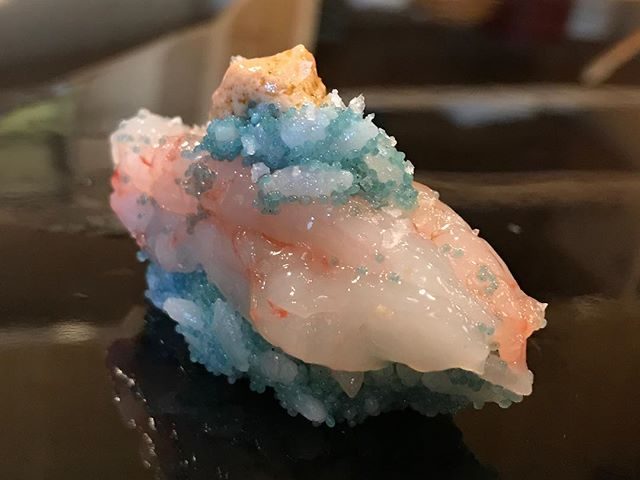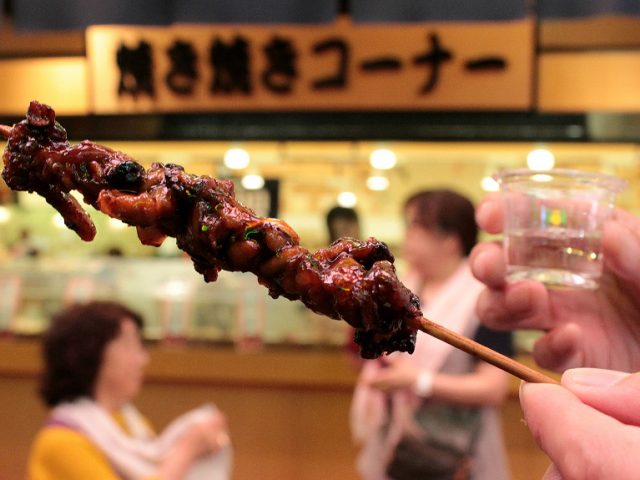Japan’s Superfood: Kouji! Soy Sauce, Miso, Amazake & More
Patrick Okwuosa stumbled into Kanazawa, Japan just over four years ago and has been living and working there since. A few months after a strong interest in fermented foods began, he began working in Yamato Soy Sauce and Miso Company.
During my first two and a half years in Japan, I would continually encounter soy sauce, miso and, of course, amazake. Japan’s love of fermented food as well as the adherence to a healthy diet fascinated me. And as any food connoisseur will tell you, the quality of any food is not only dependent on the on the love and care used to make the dish, but also the quality of the ingredients used to make it. That includes the special ingredient Japan uses to make most of its delicious fermented foods: kouji.
 An all-kouji-fermended foods lunch at Kouji Park in Onomachi, Kanazawa
An all-kouji-fermended foods lunch at Kouji Park in Onomachi, Kanazawa
Kouji, Japan’s Superfood
Kouji is a type of mould that was discovered in Japan approximately 1300 years ago. Its scientific name is Aspergillus oryzae, and it was recognised as the national fungus by the Brewery Association of Japan in 2006.
Put simply, kouji is edible mould whose spores contain enzymes with decomposing qualities. These enzymes are fundamental in the breakdown and subsequent creation of certain food elements. They are living organisms with beneficial effects in the human body, including:
- healthier intestinal flora (by ridding the body of harmful bacteria) through regular consumption
- allowing the breakdown and, subsequently, easier digestion of food in the body
- enhancing and adding new sweet and umami flavors and softer textures to a variety of dishes
 Kouji-fermented rice is a key ingredient in miso, sake and amazake.
Kouji-fermented rice is a key ingredient in miso, sake and amazake.
For example, in the process of making miso, the enzymes contained in the kouji break down the starch contained in rice, turning it into glucose, giving miso its sweeter, richer taste. Similarly, kouji breaks down the protein in soybeans and turns it into peptides, amino acids essential in building and repairing body tissues and in cell growth.
Several different types of kouji are used to ferment foods, including rice kouji for the production of miso and amazake, and wheat kouji for soy sauce. Salt kouji is a great tenderiser for various meats.
Japan’s Delicious Fermented Foods
Soy Sauce: Production
Possibly Japan’s most well-known condiment is, of course, soy sauce. Soy sauce (shoyu in Japanese) was originally from China and is widely used as a seasoning for a variety of dishes in Japanese cuisine, including for sushi, sashimi and even as a broth for certain types of ramen.
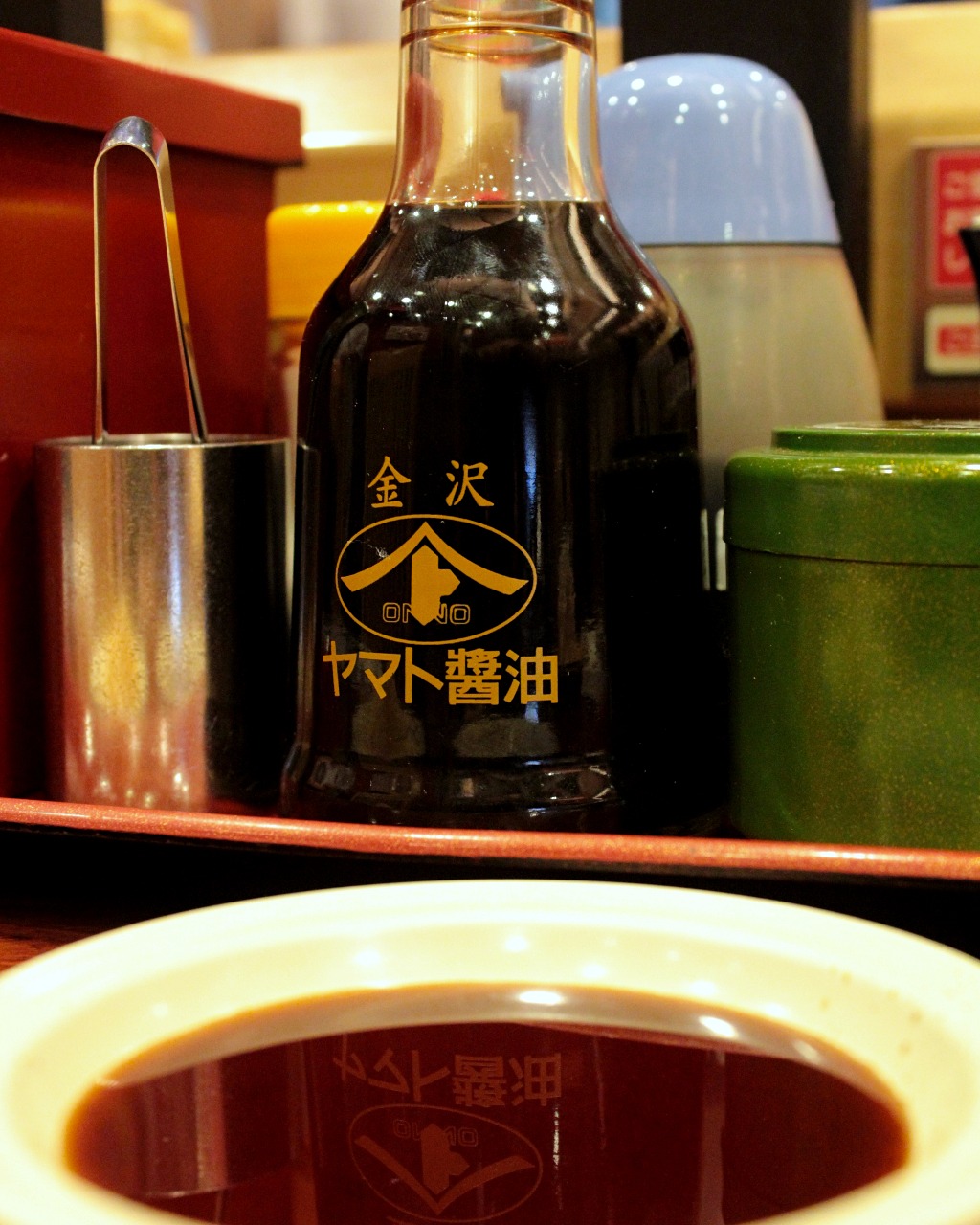 The locally produced Yamato soy sauce is served in restaurants throughout Kanazawa, like at Mori Mori in Omicho Fish Market.
The locally produced Yamato soy sauce is served in restaurants throughout Kanazawa, like at Mori Mori in Omicho Fish Market.
Traditionally, soy sauce is made using soybeans, wheat, kouji, salt and water. After washing, the soybeans are left to soak in fresh water over night, doubling in size. Afterward, they’re either boiled or steamed (depending on the manufacturer).
Separately, the wheat is roasted until it turns a light brown. Next the soybeans and roasted wheat are mixed, and kouji is sprinkled in. The kouji breaks down the mixture, beginning the fermentation process.
After a few days, salt water is added, and the mixture is stirred well and then sealed in an airtight bag or barrel, allowing for further fermentation.
From this point on the mixture is left to ferment from anywhere between 6 months to 2 whole years!
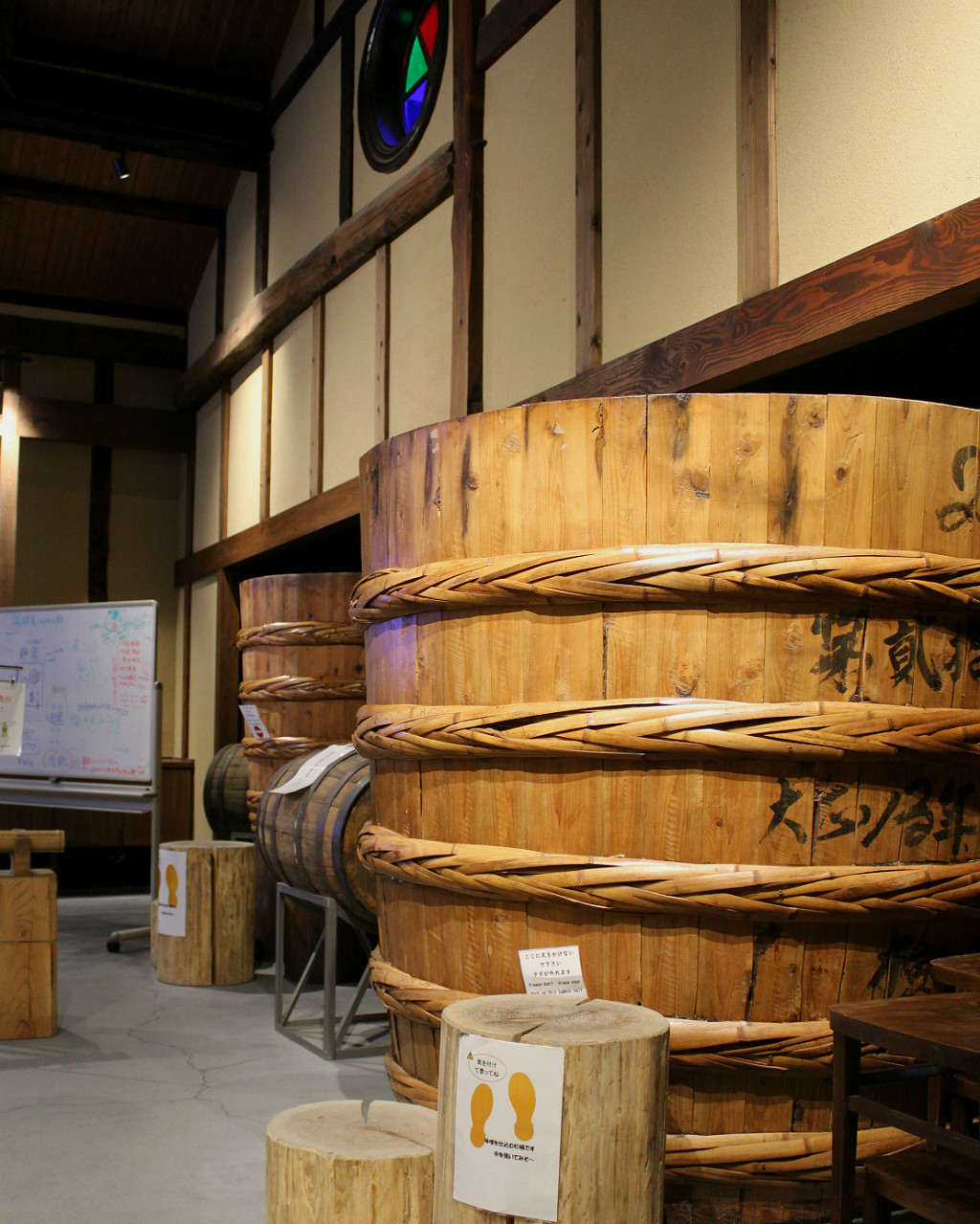 Soy sauce is aged slowly in massive barrels like these, at Yamato’s Kouji Park in Onomachi.
Soy sauce is aged slowly in massive barrels like these, at Yamato’s Kouji Park in Onomachi.
The mixture is referred to as moromi and is often stirred every few months to maintain an even fermentation. After about one year, the mixture is machine-pressed through a micro filter sheet. The drained liquid is raw soy sauce which is then heated and sterilized to create a commercial grade product.
 Barrel drying between production cycles at Yamato’s Kouji Park in Onomachi.
Barrel drying between production cycles at Yamato’s Kouji Park in Onomachi.
Soy Sauce: Taste and Types
Soy sauce is typically high in sodium, hence its salty taste. But it’s also rich in antioxidants and amino acids as well as a small amount of potassium, so it can be enjoyed as an alternative to regular table salt.
When it comes to soy sauce, there are far too many varieties to list in this article but some of the most common ones you may come across are:
- Raw soy sauce
As with most raw soy sauces, the enzymes that occur from the production process are still active within the sauce, allowing for a rich aroma and vibrant taste. - White soy sauce
This type of soy sauce uses a higher proportion of wheat, producing a sweeter, subtler taste than regular soy sauce. - Tamari soy sauce
Widely used in Japan, tamari is not made with wheat and so is a gluten free soy sauce. It is typically darker and tends to be less salty. - Ponzu sauce
Ponzu typically uses soy sauce as a base liquid as well a citrus extract to give an extremely tangy, rich taste. In Japan, ponzu sauce can be used as a dressing for salads, a seasoning for stir fry and condiment for fried meats and fishes. Yamato’s ponzu sauce contains brown rice amazake, giving the sauce a delicate sweetness.
Miso
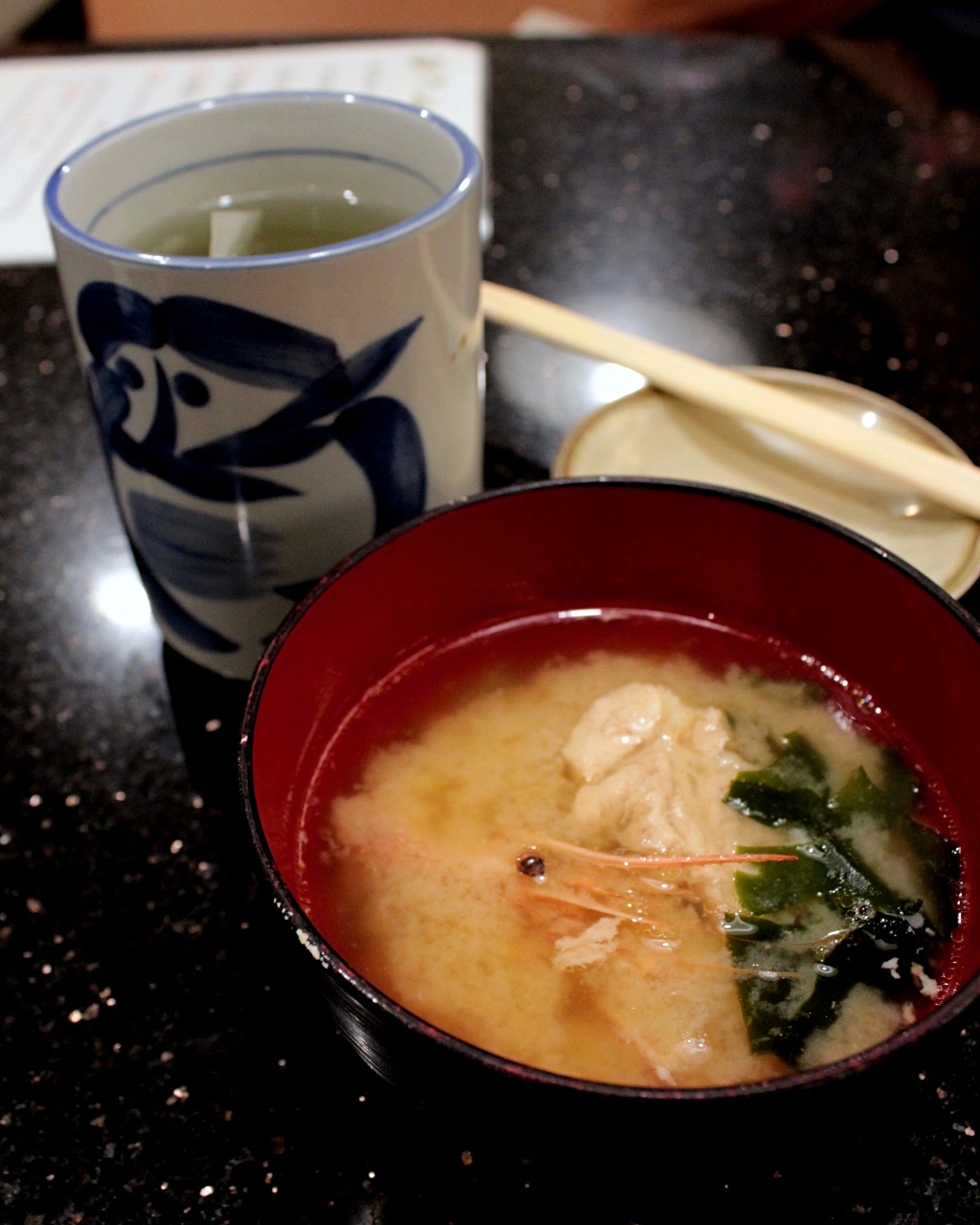 Miso is a main ingredient in the seafood miso soup at Ponta Sushi.
Miso is a main ingredient in the seafood miso soup at Ponta Sushi.
Miso is a protein-rich paste that stimulates digestion and helps energise the body. It is abundant in a variety of essential minerals and acts as a rich source for magnesium, vitamin K, vitamin Bs, vitamin E, carbohydrates, fibre, protein and the list goes on. Few other foods contain as many nutritional elements as miso.
Miso soup may even be associated with lower cancer incidence. A study between 1966 and 1978 by the National Cancer Research Centre in Japan found those who consumed no miso soup were 1.5 times more likely to develop a type of cancer compared to those who drank it every day. (This study of course took into account other lifestyle activities such as smoking.)
In addition to soups, miso is a delicious condiment for fresh vegetables.
Amazake
Literally meaning “sweet sake”, amazake is a heavy, sweet fermented rice drink traditionally served warm in winter. Because of its nutritional properties, amazake was often provided to fatigued soldiers in the summer during wartime. Amazake has since become associated with both seasons and is enjoyed year round.
Unlike regular sake, amazake typically contains no alcohol. (Although, some types of amazake are made with sake-lees, giving it alcoholic properties.)

Recently I have absolutely fallen in love with barley amazake. Instead of only rice and kouji, this amazake is made with barley, a natural grain abundant in nutrition, and especially fibre. It has a smooth, creamy texture to it that lightens the taste buds. Personally speaking, I try to have a cup of it every morning mixed with black coffee. The natural sweetness from the amazake accentuates the coffee perfectly.
I get my barley amazake from the only maker I know, the company I love working for. And it’s time I introduced you.
About Yamato Soysauce & Miso

Over a century ago, a marine trader, Yamamoto Tomatsu, made his fortune shipping lumber to and from Hokkaido. Taking the yama from his family name and the to from his given, he settled down and established Yamato here in the port town of Ono-machi.
The next generation after Yamamoto added soy sauce to the company’s production. The third added miso and the fourth and current generation brough more kouji-related products.
Today, the philosophy of Yamato Soysauce & Miso (yes, soysauce is one word in the name) is to create both inner and outer beauty by cultivating and promoting health and happiness through kouji-based foods. In fact, we have a particular saying: ‘One soup, one plate with a kouji seasoning’, that being a bowl of miso soup, a bowl of brown rice and a dish with a kouji-fermented seasoning.
 Kouji-fermented dessert at the Kouji Park’s bar, lightly sweet and served with Kaga-bocha hot tea.
Kouji-fermented dessert at the Kouji Park’s bar, lightly sweet and served with Kaga-bocha hot tea.
I have truly come to appreciate this lifestyle, as well as Yamato’s adherence to it. Thanks to a change in diet and trying out this philosophy for myself, I lost about six kilograms after approximately four months.
Before joining Yamato, I wasn’t as familiar with kouji or its nutritional properties. But enjoying these foods has changed my life for both my health and my interest in their creation. I hope that I have been able to give you a little bit of insight and that you, too, can enjoy a kouji-filled lifestyle.
video courtesy of Yamato Soysauce & Miso Co., Ltd.

Do you have a Kanazawa experience you'd like to share? Have you been a guest in one of Kaname's accommodations or restaurants? We'd love to share your story! Contact us about submissions to see your experience featured here.

